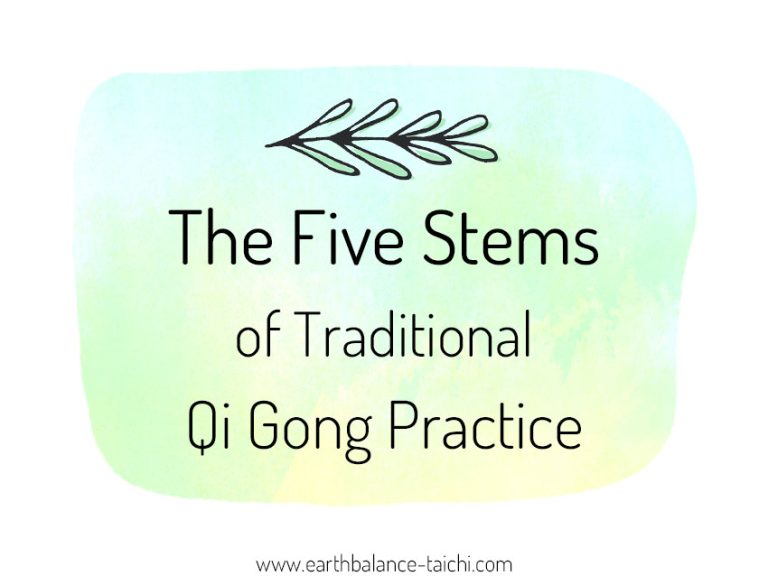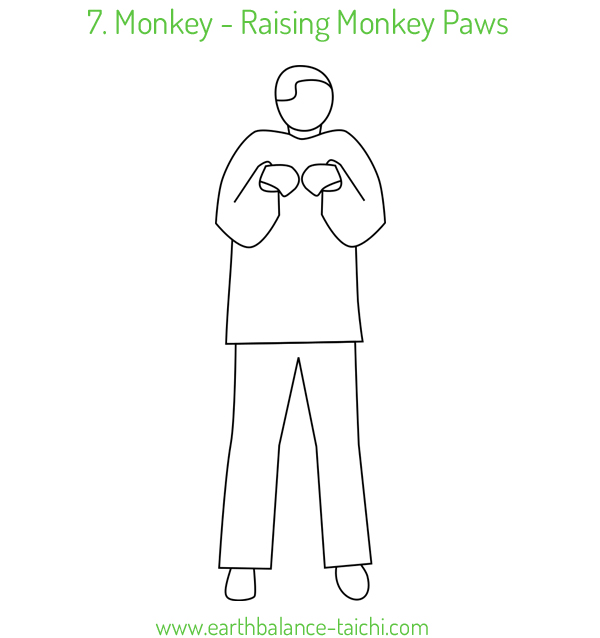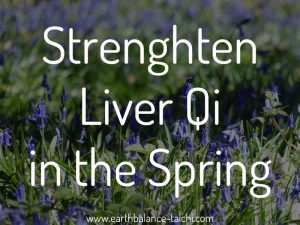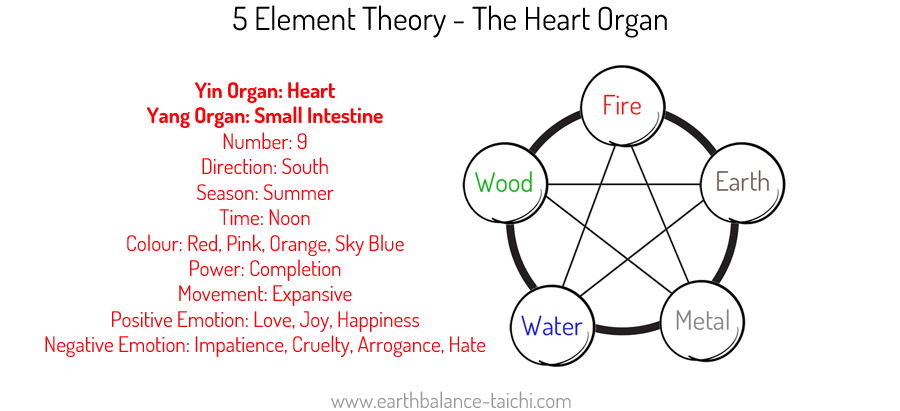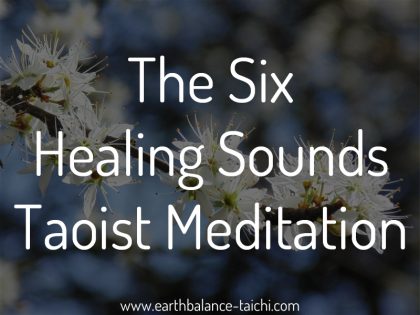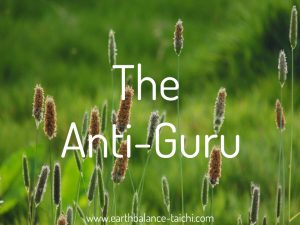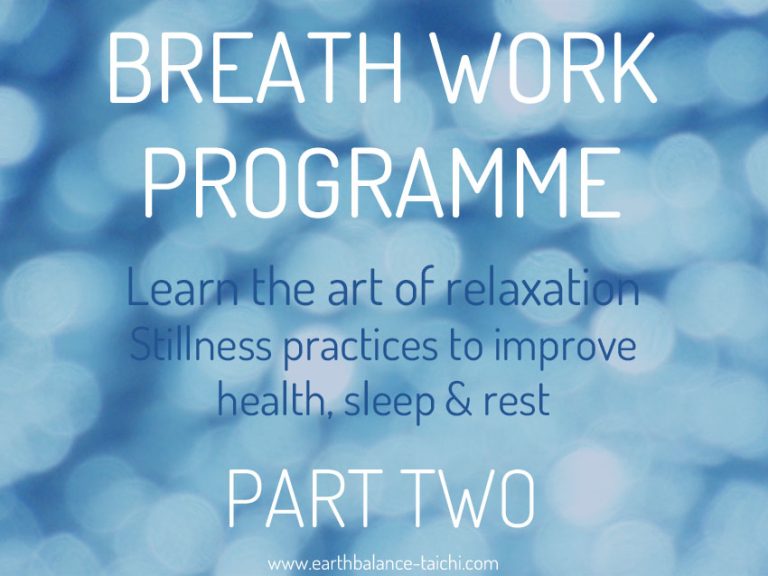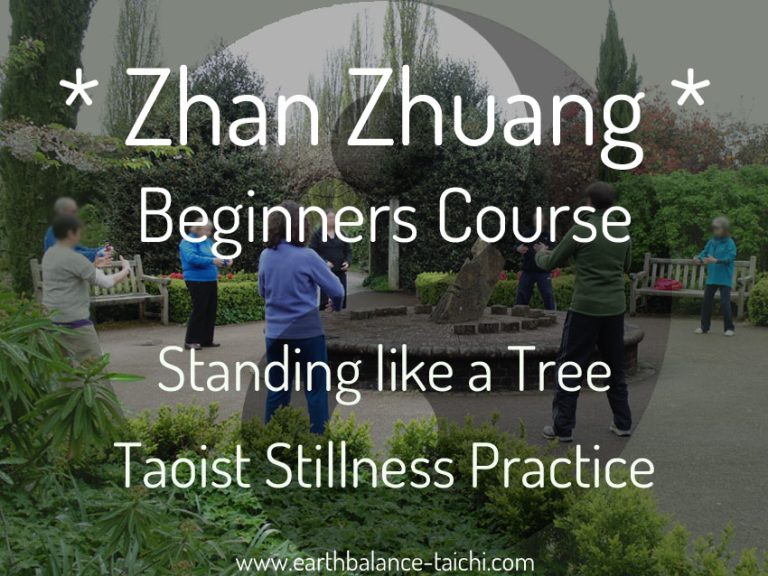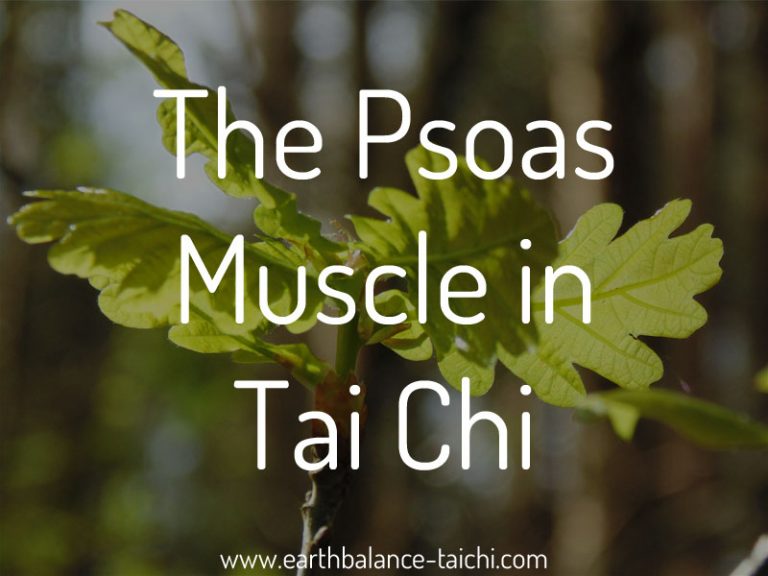Summer Qi for the Heart
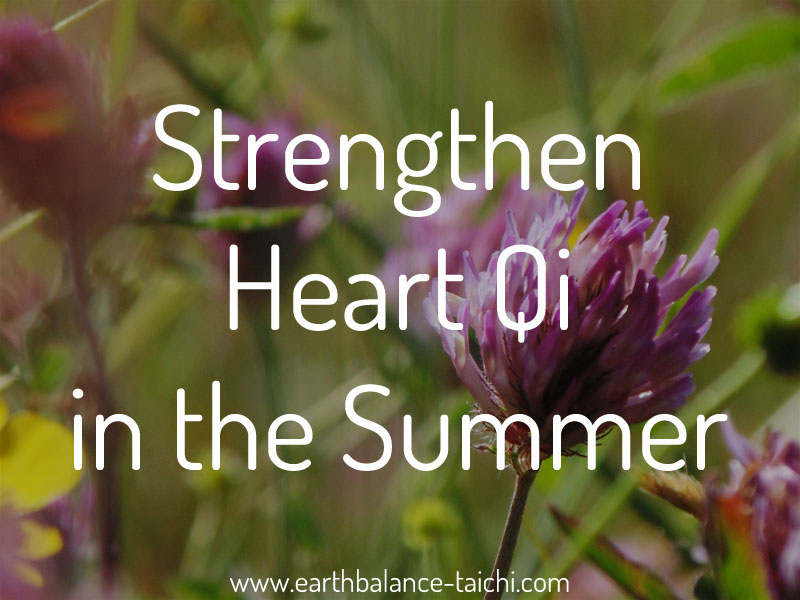
Summer Qi for the Heart
Summer is an expansive time of year that is governed by the fire element and the heart in Traditional Chinese Medicine (TCM). Here are my suggestions for strengthening your heart in the summer months. This article will explore summer Qi for the heart.
Yin Yan Theory (Heart and Kidneys)
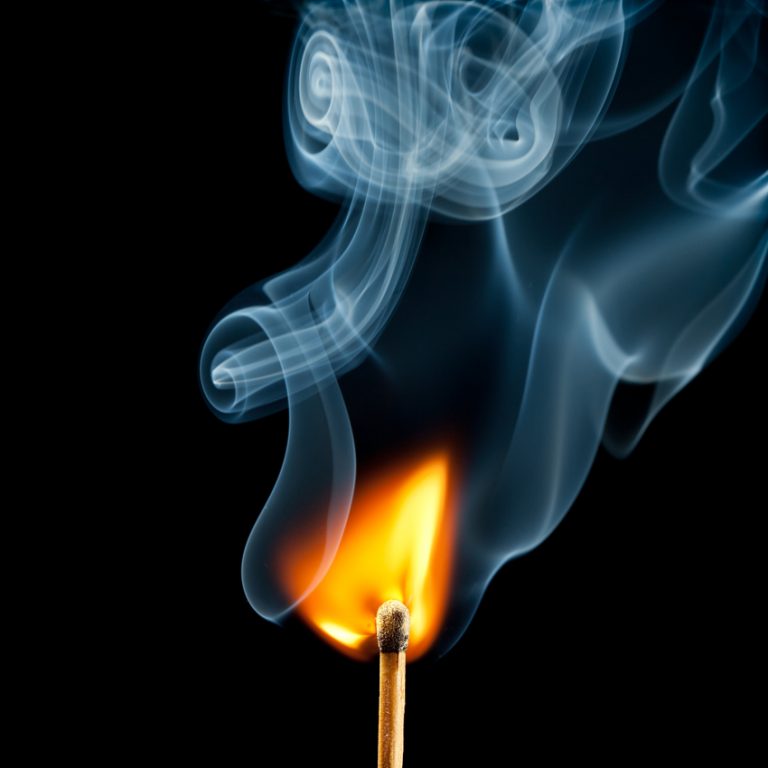
The kidneys (water element) and the heart (fire element) represent yin yang in Taoism. They are polar opposites which all the other elements are formed from.
Taiji
(unity / the one / the whole / the complete)
↓
divides into
↓
Yin and Yang (absolute and infinity)
↓
which then divide into
↓
The 5 Elements (Wu Xing)
Every characteristic of Yin is the polar opposite or the contrasting quality of Yang. Together they symbolise a cycle of constant change: from dark to light, feminine to masculine, winter to summer, cold to hot, wet to dry, aggressive to passive, absolute to infinite and so on. Whilst polar opposites, Yin / Yang also complement each other. Balancing the health of your kidneys (water element) and the heart (fire element) is very important in Traditional Chinese Medicine.
The Five Stems Video Course
Interested to know more about Qigong? Learn about the five stems of traditional learning here. Join my FREE five day mini video course available to newsletter subscribers via this link.
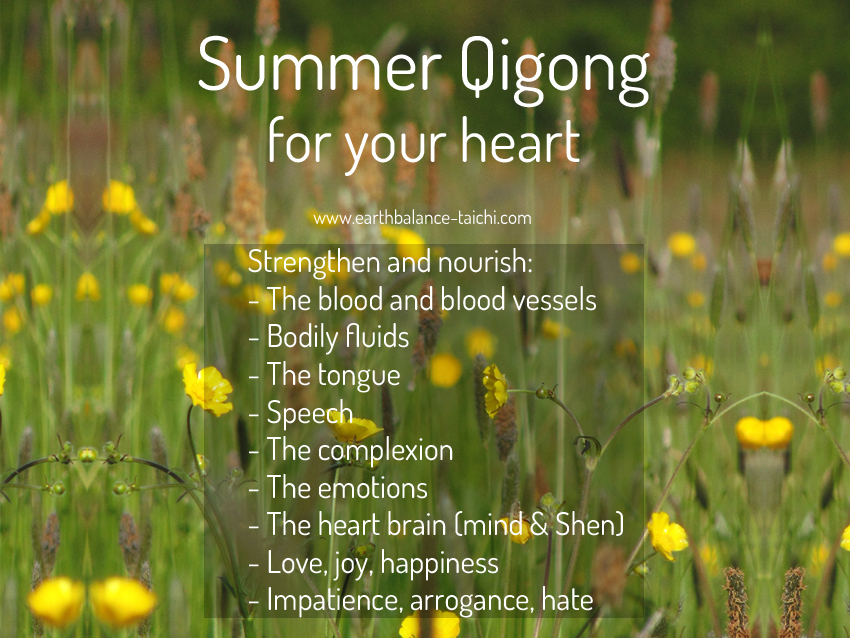
The heart is a yin organ, paired with the small intestines, a yang organ. The heart is the ‘king’ of the organs, also called the ‘supreme controller’ and the ‘emperor’. In the five element cycle, the heart controls the lungs (metal element), the heart is controlled by the kidneys (water element), the heart is supported by the liver (wood element) and the heart strengthens the stomach, pancreas and spleen (earth element).
The heart in Traditional Chinese Medicine is associated with the following emotions:
- Positive characteristics: love, joy, happiness.
- Negative characteristics: impatience, cruelty, arrogance, hate.
Too much love, joy, happiness can be just as damaging as too little, even though they are positive emotions, excess either way is unfavourable. Rather than the emotions relating to a psychological brain state, in Traditional Chinese Medicine the heart governs a specific pairing of emotions. To bring these emotions back into balance, the heart is treated, by strengthening and supporting with the five element theory.

Taoist associations with the heart
The following table explores the Taoist associations with the heart:
| Five Element Theory | The Fire Element |
|---|---|
| Associations | Inspiration, Protection, Achievement, Passion, Clarity, Intellect |
| Season | Summer |
| Time | Noon |
| Direction | South |
| Celestial Animal | Phoenix |
| Yin or Yang | Yang, Masculine |
| Movement | Expansive |
| Power | Completion |
| Flavour | Bitter |
| Sound | Roar |
| Weather | Heat, Dry |
| Climate | Hot |
| Age | Prepubescent |
| Stage of Life | Growth |
| Organ | Heart, Small intestine |
| Material | Physical fire |
| Shape | Triangle |
| Form | Sharp edges, Pointed roof, Triangle, Pyramid, Spires |
| Colours | Red, Purple, Sky blue, Lilac, Pink, Baby Pink, Orange |
| Yin (Feminine) | Soft lighting, Candles, Incense |
| Yang (Masculine) | Log fire, Bonfire, Brilliant sunshine |
TCM Functions
In Traditional Chinese Medicine, the heart is responsible for a variety of functions in the body:
- Governs the blood.
- Controls the blood vessels, which are seen as the tissue of the heart.
- Pumps blood around the body.
- Controls bodily fluids e.g. sweat, which is seen as the fluid of the heart.
- Controls speech, to speak your truth from the heart.
- The sense organ of the heart is the tongue. A balanced heart will show via a healthy tongue. A tongue that is pale, dark purple or has cracks along the middle symbolises a deficiency in the heart.
- Controls the complexion, the condition of the heart is shown in the face due to the abundance of blood vessels.
- The emotional / feeling / psychological centre of the body.
- The mind and Shen both reside in the heart centre, sometimes called the heart brain. The Shen is our spirit, our spiritual life and our vitality. The heart yin and heart blood nourish our Shen.
Potential symptoms stemming from a heart deficiency in Traditional Chinese Medicine:
- Blood flow, circulation, heart rhythm and heart issues.
- Clogged arteries.
- Speech issues e.g. from brain injury or stroke.
- Spontaneous sweating (heart qi deficiency).
- Excessive sweating (heart qi deficiency).
- Night sweats (heart yin deficiency).
- Pale tongue / pale complexion (heart blood deficiency).
- Purple tongue / red complexion (excess heat).
- Flushed red cheeks.
- Blue tinge to the face.
- Inability to express yourself or over expressive in character (heart qi deficiency).
- Excessive openness or closeness in character (heart qi deficiency).
- Mental health (depression, anxiety, insomnia, psychosis).
- Poor memory.
There are many types of heart deficiency within Traditional Chinese medicine, all relating to the five element theory and the meridian channels.
The 5 Element Cycles and Relationships
The heart is the fire element in Traditional Chinese Medicine. In the five element theory, the other four elements interact with the fire element. The concept of the five elements is to bring everything back into balance, each coexisting without dominance. The following graphic looks at the relationship and cycles between wood, earth, metal and water with the fire element.
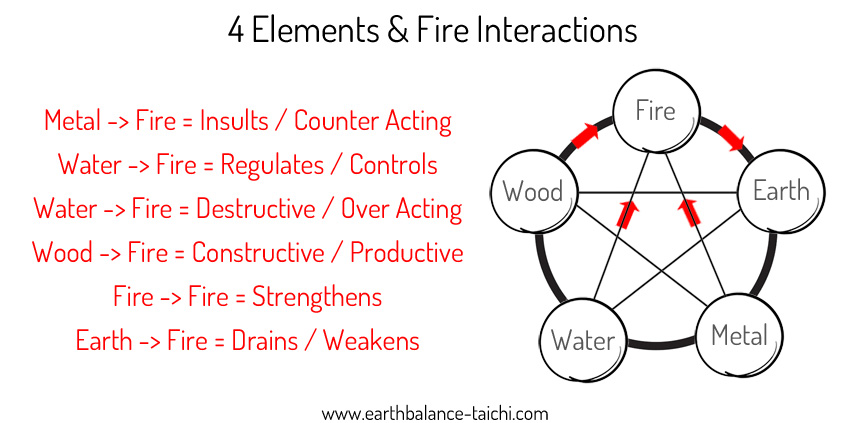
A Doctor of Traditional Chinese Medicine would determine which of the five elements could be utilised to help strengthen, weaken, control or regulate the metal element. An example would be if the fire element was deficient, then the wood element would be used to support and the fire element would be used to strengthen. If the fire element was too strong, then the earth element would be used to drain, or the water element would be used to regulate.
Summer Qi for the Heart - Movement
To nourish your heart with exercise, look for arm movements that expand, compress, spiral and involve the armpit area and inside arms, as this is where the heart meridian runs.
- To strengthen your heart, look for movements that stimulate the fire element: heart meridian channel (yin) and small intestine meridian channel (yang).
- To support your heart, look for movements that stimulate the wood element: liver meridian channel (yin) and gallbladder meridian (yin).
5. Sway the Head and Shake the Tail
- Health: Strengthens knees, legs, waist and back, coordination, lessens stress.
- TCM: Regulate heart fire (stress) by lowering the heart below the kidneys, to pour kidney water onto the fire in the heart.
- Movement: Step out into a horse stance. Fold and tilt the spine around a half circle. Maintain a straight upper body.
- Spine involvement: The spine stays straight as it stretches away from the hips through the crown, rotating and folding and sweeping from left to right, and right to left. The spine is held stable via the opposing pressure through the legs and feet into the ground.
Monkey Movements
Yin Organ: Heart
Yang Organ: Small Intestines
Raising Monkey Paws
- Organ: Stimulates the heart through compression and expansion movements.
- TCM: Nourishes blood flow, strengthen the blood vessels governed by the heart, massages the heart and stimulates blood and qi circulation to the brain. The changing hand postures stimulate qi in the 3 yin and 3 yang meridian channels in the wrist/hand.
- Health: Balance, neuromuscular response, respiration and lung health.
Picking Fruit
- Organ: To regulate the heart mind.
- TCM: The eye and head movements help boost increase circulation to the brain.
- Health: Levels the emotions, settles the central nervous system to help reduce depression and anxiety.
Heart Movement in Earth Qigong for Women
Spirit of Vitality
TCM: Stimulates the heart. Stimulate qi flow through the middle dantian to open the heart.
Health: Develops spiritual health, aids depression, aids fatigue, balances emotions.
Key Movements: A compressing and expanding movement with gentle stepping forwards, the arms raise up over head opening the heart centre, middle and upper dantians.
Summer Qi for the Heart - Stillness
To nourish your heart through meditation, there are a variety of ways to practice. From abdominal breathing techniques to visualisation of colour and emotions. The following practices will help to strengthen the vitality of your heart whilst softening your nervous system.
Health: Activation of the natural relaxation response when breathing correctly at 5 breaths per minute or less. This switches the body into a neutral state, softening negative emotions (e.g. impatience, cruelty, arrogance, hate that relate to the heart organ), releasing happy brain chemicals and relaxing the physical body.
Key Movement: The lower abdomen, side ribs and lower back expand on the inhale and relax on the exhale. The diaphragm must engage during deep abdominal breathing to ensure the body is set up to relax. Shallow chest breathing would mimic the stress response and induce physical stress reactions.
The Heart
- Opening the Heart Fire to burn out the negative and fuel positive vitality.
Hand Position
- Raise the hands.
- Palms together facing the heart.
- With the thumbs resting softly on the body by the heart.
Action
- Smile down to your upper sternum.
- Imagine this area filled with warmth and light and blossoming like a flower.
- Smile down like water cascading to your heart.
- Imagine this area filling with feelings of love, like a fire burning in your heart.
- Fill the heart with the colour red, breathing a red mist of love and light into the heart.
- Imagine the heart strengthening and being nourished.
- As you breathe out imagine that your heart is burning out all the negative emotions, exhaling a red mist of the negative emotions.
- Inhale feelings of love, joy, happiness.
- Exhale feelings of impatience, cruelty, arrogance, hate.
- When you feel the heart has expanded with love and joy, it will blossom like a flower releasing a fragrance.
The Healing Sounds for the Heart
Hand Position:
- Start with hands resting on top of thighs, palms facing upwards.
- Bring the hands to the heart area.
- Inhale and raise arms above your head, interlink your fingers, pressing palms to the ceiling and lean to the right a little as you make the sound, keep looking up.
Sound:
- Keeping your mouth wide, exhale with ‘hawwwwwwww’, almost a whisper like you are trying to create condensation on the window.
Zhan Zhuang / Standing Practice
Take you stillness meditation practice into an energising standing posture. Choose your pose, from embracing a tree stance to earth energy, all stances are welcome. Continue the inner smile practice to nourish and strengthen the heart by visualising breathing in the colour red, or a warm red light into the heart centre, to recycle the positive and negative emotions associated with the fire element.
Heart Foods
In Traditional Chinese Medicine, strengthen the heart with the following foods:
- Taste: bitter (if you crave bitter tastes, your heart needs attention).
- Bitter, sour, spicy and sweet food.
- Red foods: Red beans, kidney beans, red lentils, beef, tomatoes, red grapes, red apple, beetroot, red radishes, rhubarb, strawberries, cherries, raspberries, watermelon, red pepper, cherries, goji berries and red dates.
- Chilli and cayenne.
- Basil, dill, chamomile.
- Egg yolk.
- Coffee.
- Broccoli.
- Ginseng.
- N.B. With some heart deficiencies in TCM, you must avoid coffee and spices. If you have excess heart fire, avoid heart foods and eat water foods. Refer to your TCM doctor.
Summer Qi for the Heart - Please speak with your doctor prior to starting a new exercise or meditation programme. This article is for information purposes only and must not be taken as medical advice.
